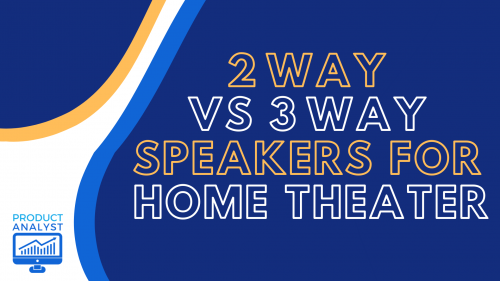
Choosing the right speaker when building a home theater can mean the difference between total immersion and a bad experience. With so many different types of speaker systems available, deciding which one is right for you can be difficult. Which should you buy? In this 2 way vs 3 way speakers for home theater match, our experts weigh your options.
2 Way vs 3 Way Speakers for Home Theater
What is a 2-Way Speaker?
This is a type of speaker with 2 audio drivers called the woofer and tweeter. The woofer driver is something made to handle a lower frequency range, such as bass tunes, while the tweeter handles a higher frequency range. This kind of system is more familiar with basic or entry-level models, but hi-fi models are made to output the audio in a more specific manner.
What is a 3-Way Speaker?
In the case of the 3-way speaker, it is equipped with at least three audio drivers. In addition to the woofer and tweeter, it comes with a midrange driver placed in the center. The midrange driver emphasizes vocals, so woofers and tweeters no longer need to output the mid-range, allowing better audio separation between the sound frequencies.
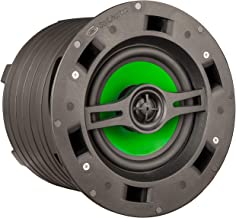
Differences Between 2 and 3 Way Speakers
First of all, you have to understand that the only reason a speaker would have multiple drivers is to have specialized output for certain frequencies in the audio spectrum.
A 2 way system only has a woofer and a tweeter as drivers. These components share the mid-range frequency. In terms of budget, they have fewer parts and are easier for manufacturers to build, making them more affordable.
3-way speaker systems tend to have a better frequency range because different sound waves are produced by different driver sizes, making the speaker sound fuller. However, since these systems have more parts, they tend to have a higher price range.
Which is Better?
Our experts say that it depends on the kind of music you listen to. Are you a fan of softer tunes? 2-way tends to be better for this type of music. If you’re more into rock, jazz, or metal, a 3-way system may be best as those tend to output bass frequencies better.
While it seems intuitive that dividing the job between three rather than two speakers could result in better sound reproduction, there are a number of other variables to consider. The most significant speaker in a surround system, according to our experts, is the center channel. It carries not only the dialogue but also of music and effects. If the center speaker can’t handle that, the entire system will be jeopardized, regardless of whether it is 2 way or three-way.
Since there are 3 drivers to work with, manufacturers need to fine-tune the crossover [1] between each driver so the audio doesn’t sound muddy. Crossover filters are used to monitor a speaker’s frequency response. It ensures that the correct frequencies reach the correct speaker.
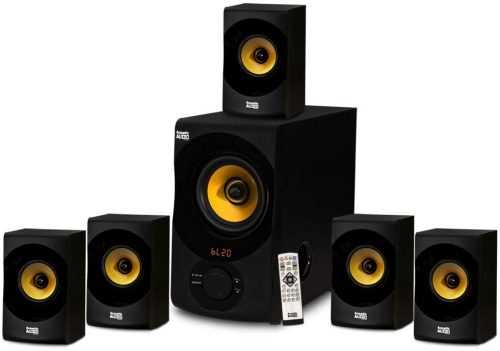
A poorly configured frequency can ruin any advantage gained from the dedicated hardware. The benefits include a wider frequency and exceptional low-frequency extension. In the case of the 3 way speaker, it also has less distortion. It has more information and more significant dynamics, and it can adapt to a wider range of musical styles.
Coaxial speakers are the more common name for two-way speakers. Since it have only 2 drivers or two speakers, manufacturers can better tune the crossover frequency, ensuring quality sound reproduction. Audio from this kind of speaker tends to be more balanced-sounding and in certain media, sound better.
The advantage of it includes low cost and simple crossover: small size, low power amplifier power requirements. The music is played with a lot of focus. The majority of bookshelf speakers are two-way.
Factors to Consider Before Purchasing
Here are other factors to consider before buying a speaker system.
Design Quality and Material
Most of the time, speaker cabinets, are made of either medium-density fiberboard (MDF) or plywood. Both items are already good enough for speaker-making in terms of quality, but plywood tends to be sturdier and holds paint better. You need to make sure the material isn’t so thin that it would vibrate easily. Other items such as cable quality should also be considered.
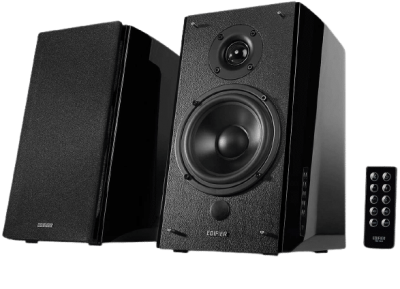
Crossover Components
The crossover can be thought of as the brains of the speaker. It’s that one thing that controls which driver each frequency passes through. This part is quite complex, but good quality components like its capacitor, inductor, and resistors are factored in by manufacturers when programming the frequency.
Furthermore, if you’re building your crossover, the quality and configuration will affect sound quality.od. Both items are already good enough for speaker-making in terms of quality, but plywood tends to be sturdier and holds paint better. You need to make sure the material isn’t so thin that it would vibrate easily. Other items such as cable quality should also be considered.
Sound Preference
What music you listen to should also be a deciding factor. There is no reason to get a 3-way system if your preferred genre doesn’t have any bass.
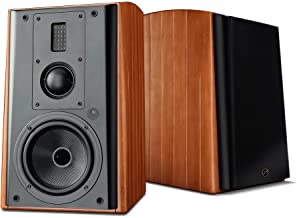
FAQ
Is 2-way or 3-way speakers better?
3-way speakers are better than 2-way if you like bass-heavy music like rock, metal, pop, or jazz. If you’re more into ballads, symphonies, orchestras, or simply aim to watch TV series and movies, a good quality 2-way set may be the one to get.
Conclusion
3 way vs 2 way speakers for home theater can be superior if the former has distinct drivers and high-quality filtering. It also has the advantage of allowing the speaker’s frequency to be moved two channels higher (often about 5 kHz) without interfering with the listening experience.
Our experts recommend that you think in every detail, from your preferred price point to your sound requirements. There is no better way to test them than with your own ears and rig to know how the 3 way vs 2 way speakers for home theater differ from each other.
The post 2 Way vs 3 Way Speakers — Which is Better For Your Home Theater? appeared first on The Product Analyst.
from The Product Analyst https://theproductanalyst.com/2-way-vs-3-way-speakers-for-home-theater/
No comments:
Post a Comment